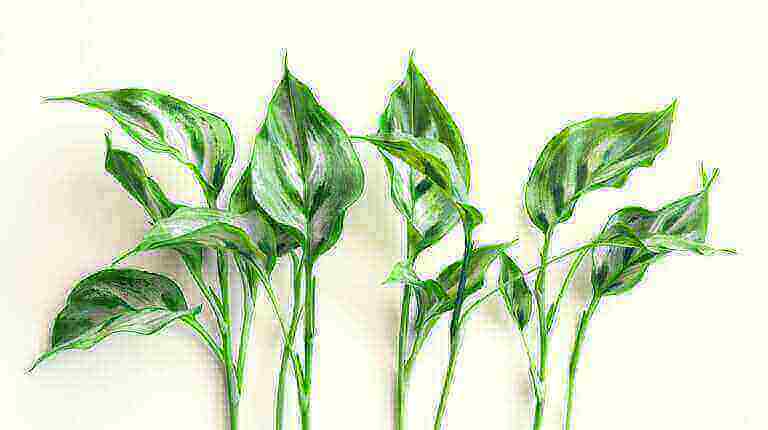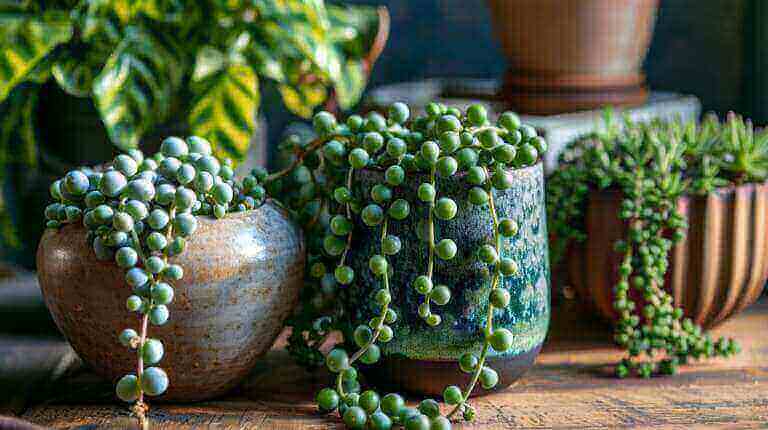Venus Flytrap Care Guide: Light, Water, Soil, Dormancy, and Feeding Needs
In this comprehensive care guide, I will provide you with all the information you need to know about caring for Venus Flytraps. These unique carnivorous plants are known for their fascinating trapping mechanism and require specific care requirements to thrive. Whether you have an indoor or outdoor Venus Flytrap, understanding its light, water, soil, dormancy, and feeding needs is essential for its optimal health and growth.
Key Takeaways:
- Venus Flytraps are carnivorous plants known for their unique trapping mechanism.
- Proper care is essential for the health and growth of Venus Flytraps.
- Indoor and outdoor Venus Flytraps have different care requirements.
- Light, water, soil, dormancy, and feeding needs should be carefully considered.
- Providing suitable food and maintaining the right conditions is crucial for their well-being.
Growing Locations for Venus Flytraps
When it comes to growing Venus Flytraps, the right location is crucial for their health and development. These carnivorous plants thrive in direct sunlight, so whether you choose to grow them indoors or outdoors, ensure they receive at least six hours of bright sunlight each day. This is essential for their photosynthesis process and overall growth.
If you’re growing Venus Flytraps indoors, place them on a bright, sunny windowsill. South-facing windowsills in the US or UK provide the ideal amount of sunlight. For outdoor cultivation, consider using terrariums or conservatories to protect the plants from extreme weather conditions while still allowing them to receive ample sunlight. These structures can create a microclimate that mimics their natural habitat.
Indoor Venus Flytrap vs. Outdoor Venus Flytrap
While Venus Flytraps can be grown both indoors and outdoors, there are a few differences to consider. Indoor Venus Flytraps are convenient for those who prefer to have these unique plants as houseplants. They can be grown in pots and placed on windowsills, providing a fascinating conversation piece.
On the other hand, outdoor Venus Flytraps have a higher chance of catching their own prey due to the abundance of insects. They also have access to the natural elements necessary for their growth, such as rainwater. Outdoor cultivation allows them to thrive in their natural habitat and potentially reach their full potential in terms of size and reproduction.
Soil and Water for Venus Flytrap
Proper soil and water are essential for the health and well-being of Venus Flytraps. These unique carnivorous plants require a specialized soil mixture to thrive. The ideal soil for Venus Flytraps is a combination of sphagnum peat moss, horticultural sand, and perlite. This mixture provides the necessary drainage while retaining the moisture levels that are crucial for the plant’s growth.
When preparing the soil, ensure that it is well-mixed and has a moist but not waterlogged consistency. This will allow the roots to access the water they need while preventing root rot. The soil should be kept constantly moist during the growing season, but it’s important to avoid overwatering, as this can also harm the plant.
Watering Venus Flytraps requires a slightly different approach compared to other houseplants. Instead of watering from the top, it is best to water them from the bottom. This can be done by placing the pot in a dish of water, allowing the plant to absorb water through its roots. It’s crucial to use pure water for watering, such as rainwater, distilled water, or reverse osmosis water. Tap water contains minerals that can accumulate in the soil over time and harm the plant. By using pure water, you can provide a healthier environment for your Venus Flytrap.
Winter Dormancy for Venus Flytrap
Venus Flytraps require a winter dormancy period to mimic their natural habitat and promote overall health. During this cold resting period between November and February, the plant enters a rest phase, conserving energy and preparing for new growth in the coming season. Understanding the dormancy requirements and providing the right conditions is essential for the long-term success of your Venus Flytrap.
Indoor and Outdoor Dormancy
Indoor Venus Flytraps can experience dormancy, although it is not necessary for their survival. However, allowing the plant to go through the rest phase can improve its overall health and encourage vigorous growth. To provide indoor dormancy, move the plant to a cool area of the house with lower temperatures, ideally between 45-50°F (7-10°C). Reduce watering during this period, allowing the soil to dry out slightly between waterings.
On the other hand, outdoor Venus Flytraps need to be protected from frost during the winter. If you live in regions with freezing temperatures, it is advisable to bring the plant indoors or provide a protective cover. Alternatively, you can dig up the plant and place it in a pot to bring it indoors for the dormancy period. Ensure a cool environment and reduce watering to mimic the natural conditions.
Temperature and Dormancy Requirements
The ideal temperature range for Venus Flytrap dormancy is between 45-50°F (7-10°C). This range resembles the cool conditions of their native habitats in the southeastern United States. It is important to note that temperatures below freezing can be detrimental to the plant’s health and even lead to its demise.
During dormancy, it is normal for Venus Flytrap leaves to turn black and die back. This is a natural process as the plant redirects its energy towards root development. Do not be alarmed by the blackening leaves; instead, focus on providing the right temperature and reducing watering.
Protecting from Frost
Frost can be damaging to Venus Flytraps, especially for outdoor plants. To protect them from freezing temperatures and frost, cover the plant with a layer of mulch or bring it indoors. If using mulch, ensure it covers the plant up to the base but does not touch the leaves directly. This protective layer helps insulate the plant and prevents frost damage.
Flowers and Seeds of Venus Flytrap
The Venus Flytrap not only captures the attention of plant enthusiasts with its unique trapping mechanism but also showcases beautiful flowers. In spring, the plant produces small white blooms that add an extra touch of allure to its already fascinating appearance. However, it is important to note that allowing the plant to flower can divert energy away from leaf production. Therefore, unless you intend to harvest seeds, it is recommended to remove the flower stalk.
If you are interested in propagating Venus Flytraps, there are a few methods you can try. One common method is division, where you separate the plant into smaller sections and replant them individually. Another technique is leaf cuttings, where you take a leaf from the plant and root it to create a new plant. Both methods require patience and care, as Venus Flytrap propagation can be challenging and time-consuming. If you prefer a more convenient approach, reputable nurseries offer seed kits and variety packs that contain a selection of Venus Flytrap seeds for you to grow and enjoy.
“The Venus Flytrap has an incredible life cycle, with its flowers and seeds being integral parts of its reproductive process. By understanding how to manage flowering and propagate new plants, enthusiasts can continue to appreciate and cultivate these captivating carnivorous wonders.” – Venus Flytrap Enthusiast
Venus Flytrap Flowering and Seed Propagation Methods:
| Propagation Method | Description |
|---|---|
| Division | Separating the plant into smaller sections and replanting them individually. Requires careful handling to avoid damage to the plants. |
| Leaf Cuttings | Taking a leaf from the plant and rooting it to create a new plant. Requires patience and attention to provide the proper conditions for successful rooting. |
| Seed Kits and Variety Packs | Convenient option for those who prefer not to divide or propagate through leaf cuttings. Contains a selection of Venus Flytrap seeds for growing and expanding your collection. |
Feeding Your Venus Flytrap
Feeding your Venus Flytrap is an essential part of its care routine, especially for indoor plants that may not have access to natural prey. These carnivorous plants rely on insects for their nutrition, and feeding them properly will ensure their growth and health. When feeding your Venus Flytrap, it’s important to consider the size of the prey, the plant’s trigger hairs, and the types of food that are suitable for consumption.
The trigger hairs on a Venus Flytrap’s leaves play a crucial role in capturing prey. When an insect lands on the plant and touches the trigger hairs, the trap will close, trapping the insect inside. Therefore, it’s important to provide small prey that can effectively stimulate the trap’s closure. In general, the size of the prey should be no larger than one-third of the size of the trap to avoid damaging the plant.
When it comes to suitable foods for Venus Flytraps, small insects like flies, beetles, and ants are ideal. These insects are typically found in their natural environments and provide the right balance of nutrients for the plant. Avoid feeding your Venus Flytrap with meat, fruit, or candy, as these foods can be detrimental to its health. Stick to live insects that can trigger the traps and allow for proper digestion.
| Prey Size | Suitable Foods |
|---|---|
| Small | Flies, beetles, ants |
| Large | Not recommended |
Buying Venus Flytraps
When it comes to purchasing Venus Fly traps, it’s crucial to find a reputable source to ensure the health and well-being of these endangered species. To support conservation efforts and avoid harm to native populations, opt for commercially cultivated plants. They are widely available and don’t contribute to the depletion of wild populations.
Specialty garden centers are excellent places to find healthy Venus Flytraps. These establishments often have knowledgeable staff who can provide guidance and answer any questions you may have about care requirements. The advantage of shopping at a specialty garden center is that you can personally inspect the plants before making a purchase, ensuring you select a healthy specimen that meets your preferences.
If you prefer the convenience of online shopping, there are reputable online retailers that offer a wide selection of Venus Flytraps. Look for websites with positive customer reviews and a track record of delivering healthy plants. It’s important to choose a reputable online retailer to avoid any disappointments or risks associated with poor plant quality or improper packaging.
FAQ
What is a Venus Flytrap?
The Venus Flytrap is a unique carnivorous plant that has evolved to catch and digest insects in its specialized trap structure. This adaptation allows it to thrive in nutrient-poor soil where other plants struggle.
How do I care for a Venus Flytrap indoors?
Caring for a Venus Flytrap indoors involves providing the right growing conditions. These plants need a lot of light, so a sunny windowsill or a spot under a grow light is ideal. They also require high humidity and prefer distilled water over tap water.
What type of soil is suitable for a Venus Flytrap?
Venus Flytraps prefer a nutrient-poor soil mix, such as sphagnum peat moss, to mimic their natural bog habitat. Regular potting soil can be too rich and harm the plant.
What is the role of dormancy in the life of a Venus Flytrap?
Dormancy is a crucial period of rest for the Venus Flytrap, similar to winter dormancy in many outdoor plants. During this time, growth slows down and the plant conserves energy.
How often should I feed my Venus Flytrap?
If you’re growing your Venus Flytrap indoors, you may need to feed it small insects or spiders every few weeks. However, they can also get nutrients from photosynthesis and may not need to be fed if they’re getting enough light.
How much water does a Venus Flytrap need?
Venus Flytraps like to be kept moist but not waterlogged. Using distilled or rain water, keep the soil damp at all times. They don’t tolerate tap water well as it often contains minerals that can harm the plant.







